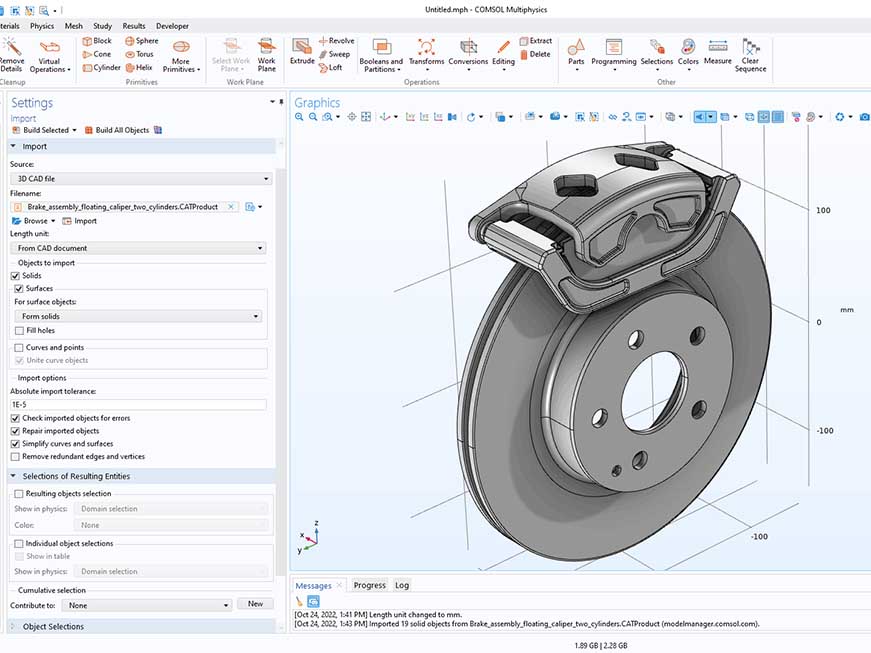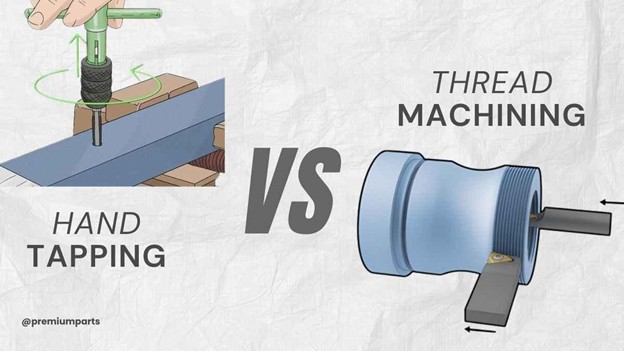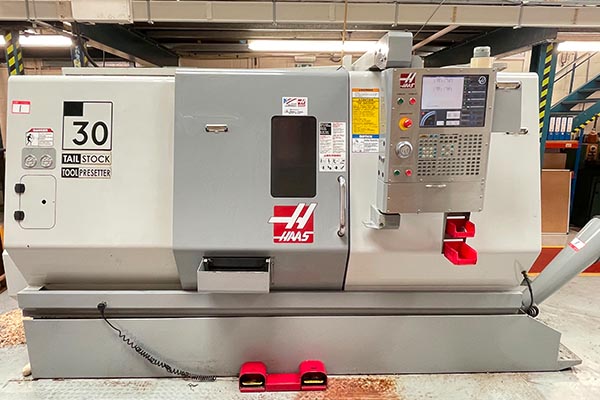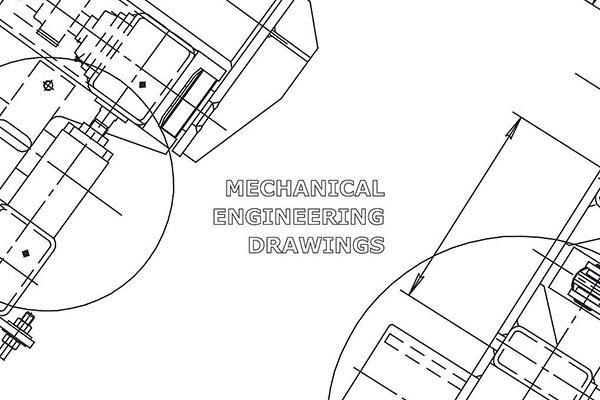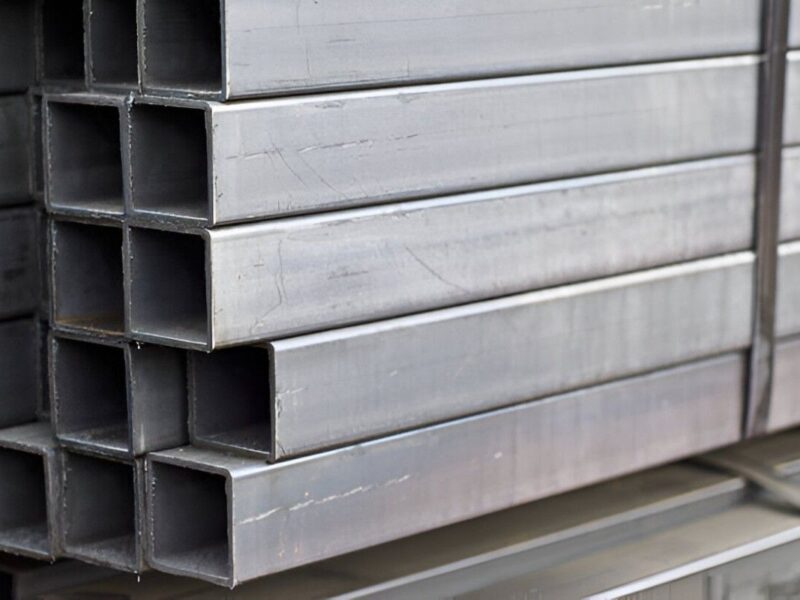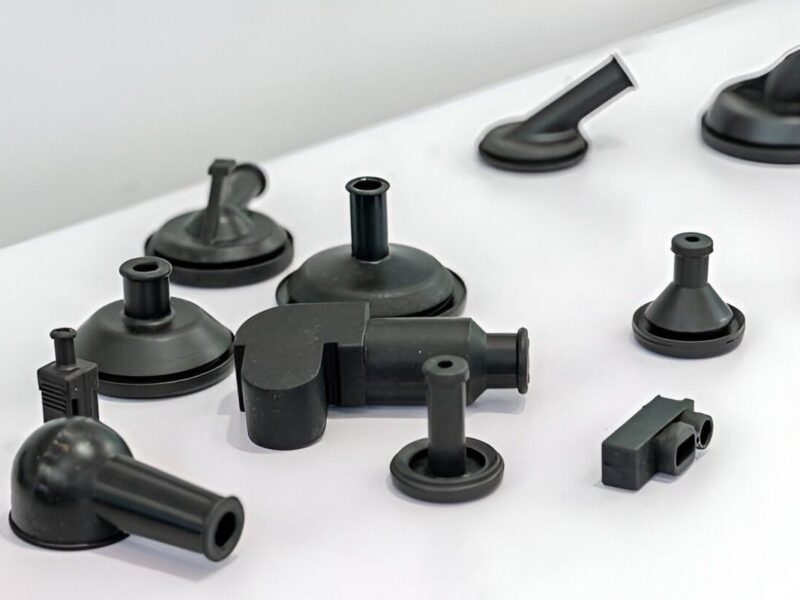Holes are a major part of machinery that offer it different functionalities. Some holes are to maintain the aesthetic appeal, while others are to bind or assemble parts. The manufacturing industry is a highly precise industry that needs accurate features, including holes. CNC drilling plays a major role there.
This method helps to create specific holes in different materials with accuracy. Besides, with this method, we can create different types of holes, from single to multi-angles and shapes.
Let’s learn about CNC drilling in more detail to understand its process, types, features, and functionality. Keep reading; you are missing a lot.
What is CNC Drilling?
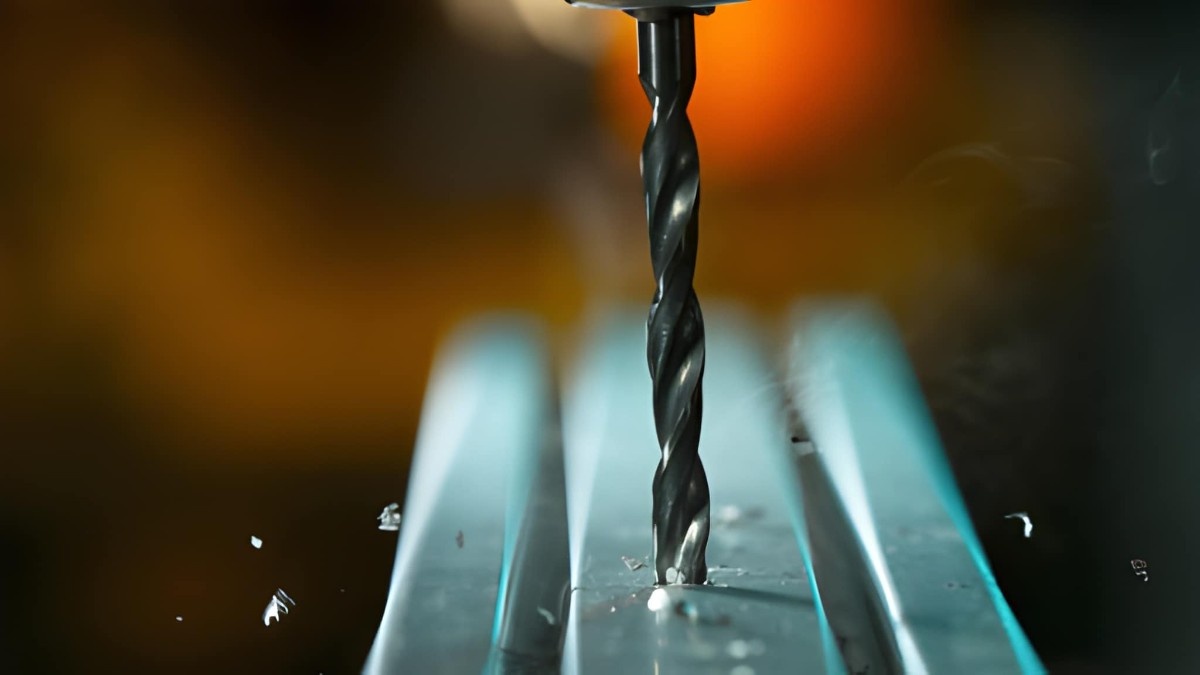 Aluminum Pipe Drilling
Aluminum Pipe Drilling
Image Description: A drill bit cuts a clean hole in an aluminum pipe. Metal chips form around the rotating bit during the drilling process.
CNC drilling, abbreviated as Computer Numerical Control, is a drilling machine that uses computers to drill. The rotating drill creates a hole in the workpiece, which can be wood, metal, or other materials. It requires a stronger operating force to rotate the drill with a unique design featuring edges to create a hole in the workpiece. The drill can be of various sizes and designs according to the requirements.
As a result, the hole serves as a settling spot for screws and bolts. Usually, the operators adjust the moment of the tool and the depth of the hole. They need to manually perform drilling with a drill bit. However, CNC automates the process and works with a pre-programmed system.
This feature ensures accuracy and consistency, which makes it unbeatable. Furthermore, CNC drilling is of best use for industries that need high precision, including aerospace, automobiles, and electronics.
What’s the Process of CNC Drilling?
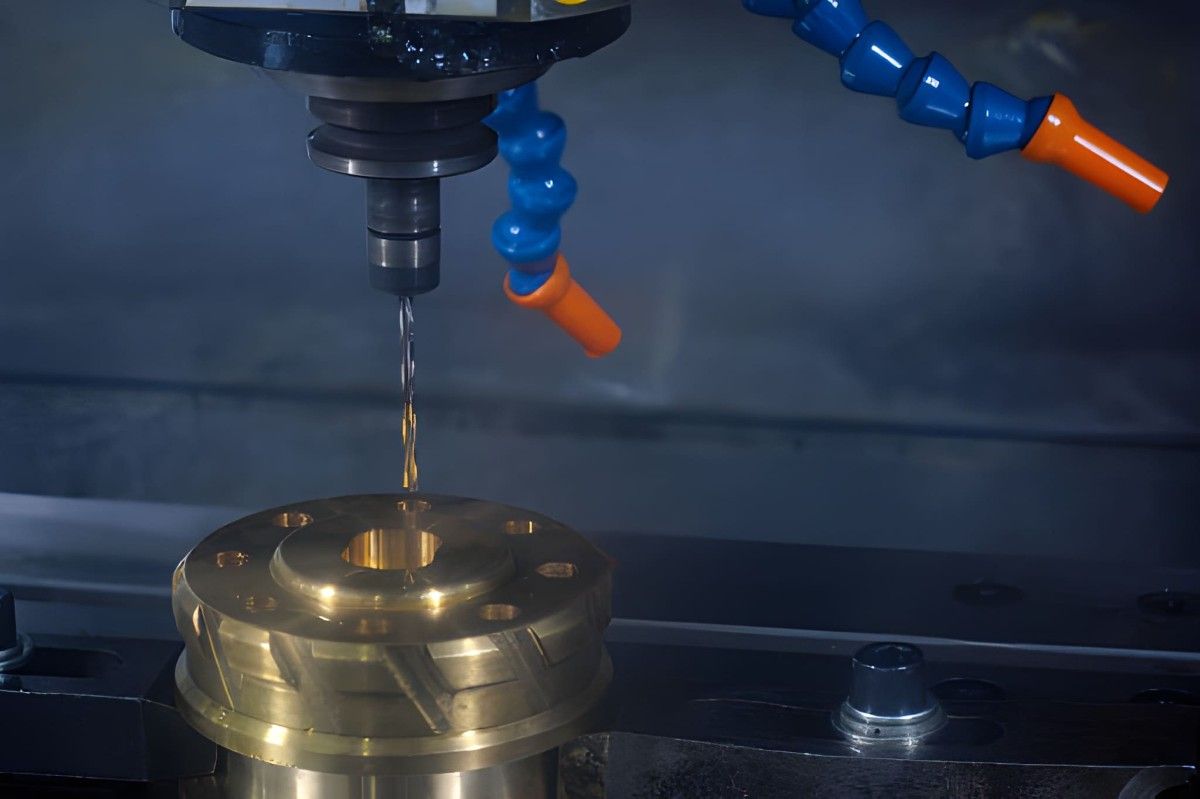 Brass Deep Drilling
Brass Deep Drilling
Image Description: A CNC milling machine performs deep-hole drilling on brass parts. The tool reaches inside the material for accurate depth control.
CNC drilling includes coding that ensures each hole is of the same size and shape. This means that if you are to create 1000+ holes, each will be consistent with the previous one. The process starts with the designing of holes and then moves to the next stage. Here’s the complete declaration of steps, each offering significant output.
Creating the Workpiece Design
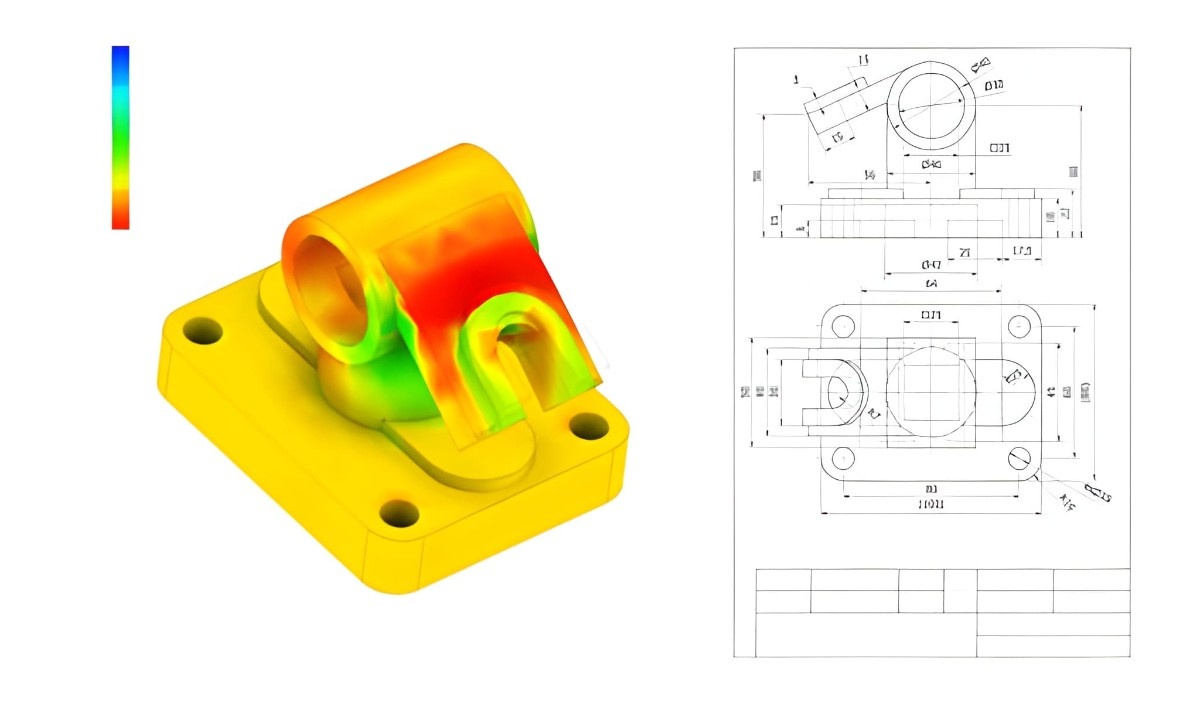 CAD FEM Analysis
CAD FEM Analysis
Image Description: A CAD model displays a finite element method (FEM) simulation. The mesh and color map show stress and structural behavior.
The first step is to create the geometry of the product and plan the drilling methods. It’s where we create a design using CAD (computer-aided design) applications such as SolidWorks or Fusion 360. With this software, designers can create a 3D model of the product they want to create.
Here, designers create the dimensions of the product, the location of holes, the size, and the depth. Shortly, you can say that this is the pillar of the whole manufacturing process. CAD usually comes along with CAM Software (computer-aided manufacturing) to turn the design into coding instructions.
Choosing the Right Drilling Cycle
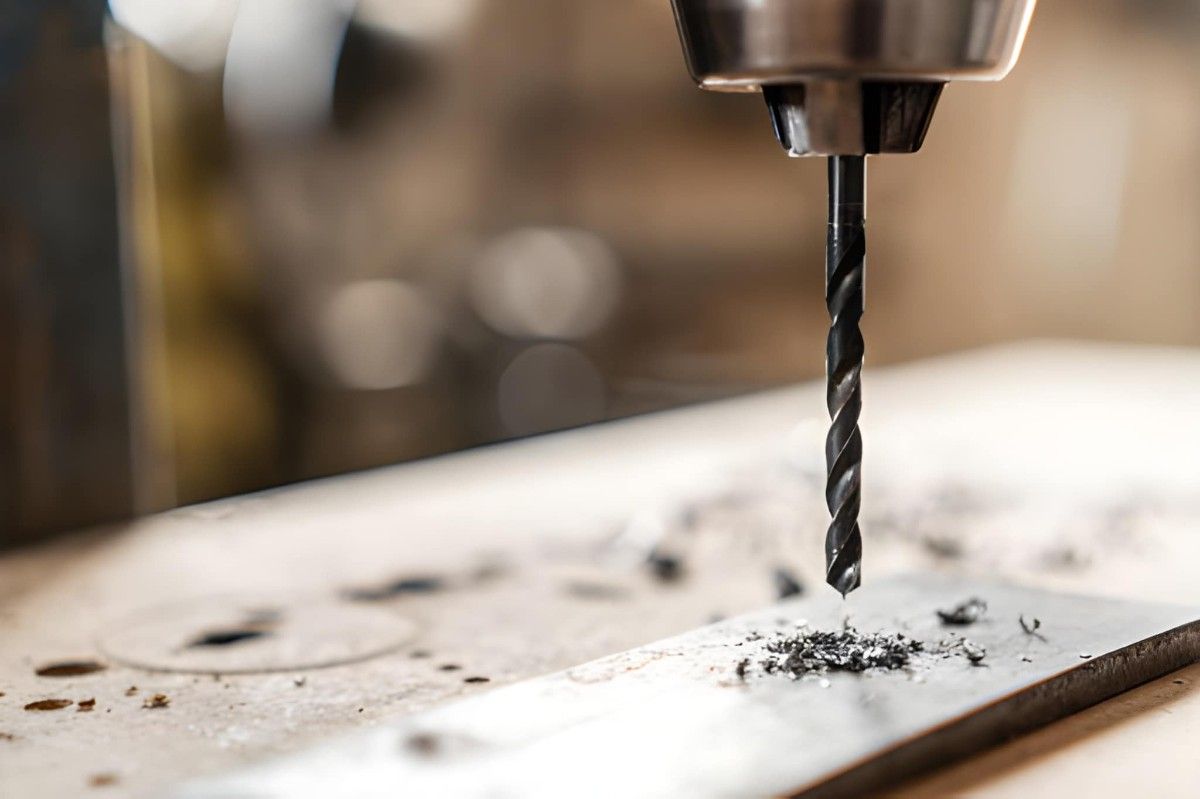 Steel Plank Drilling
Steel Plank Drilling
Image Description: A drill creates a precise hole in a flat steel plank. The scene shows metal shavings and a steady downward feed.
The core of the process, where the machine works on the coding instruction, generally includes different drilling cycles. You can choose any drilling cycle according to your requirements:
- G73 (Chip Breaking Cycle): This drilling cycle is perfect for creating deep holes with a depth three times the drill diameter.
- G81 (Shallow Hole Circulation): This method is best for creating shallow holes that do not exceed three times the drill diameter. It offers clean and accurate drilling but requires internal cooling tools.
- G83 (Deep Hole Circulation): Suitable for creating bottomless holes. However, it includes pecking movements to remove the trash and chips during operation.
Choosing the Right Tool and Its Holder
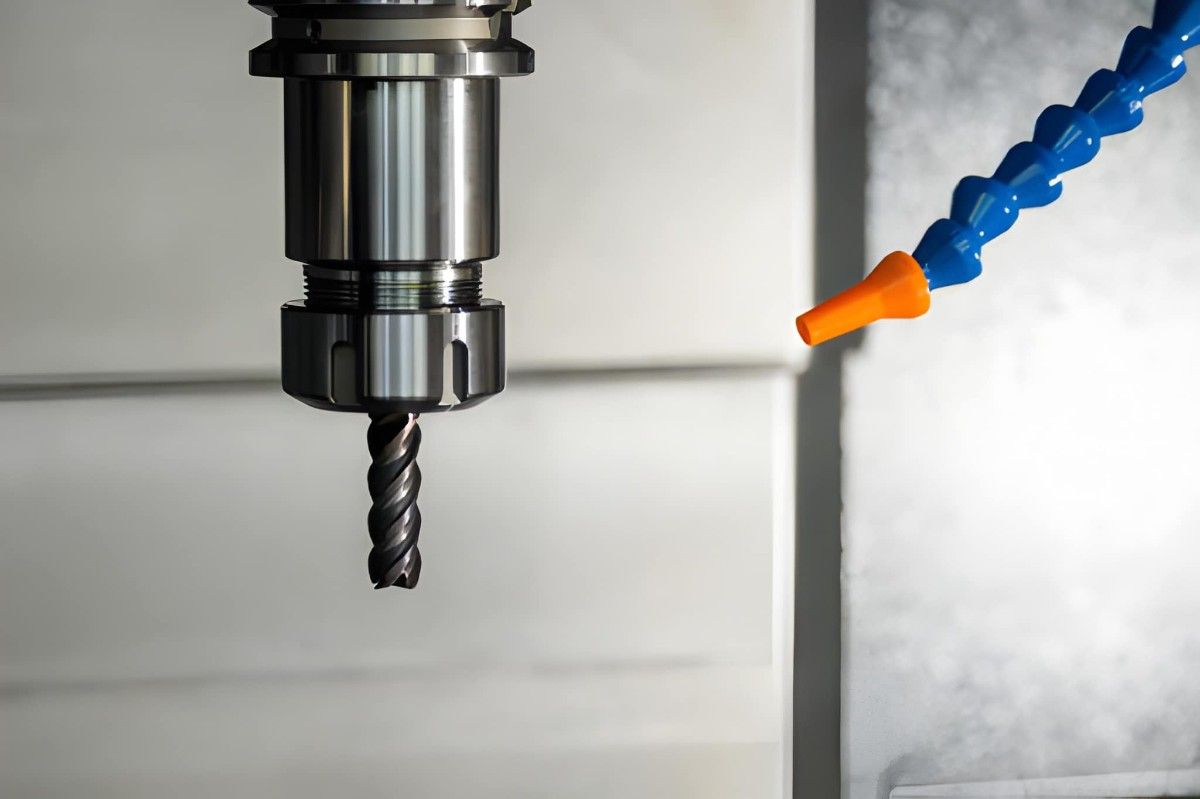 Spindle Closeup
Spindle Closeup
Image Description: A solid flat-nose end mill clamped in the machine spindle. The close-up shows the cutting edges and precise tool geometry.
The drill bit selection plays a major role in hole creation. You can use two major types of drill bits, including twist drill, which offers versatility, and center drills for special usage. Similarly, the selection of tool holders is equally important. You need to select the holder that fits the tool well and offers shank compatibility. The most common options include collet chucks and hydraulic chucks.
Moreover, the incorporation of parameters such as the length and diameter of the tool in the CAM system is necessary. This will tell the machine to work accurately within the specific range.
CNC Drilling Machine Setup
You need to do a machine setup before starting drilling. This includes the clamping and adjustment of the drill bit and its holder. You can use fixture plates and clamps to ensure firm holding of the tool. Besides, machine calibration is also important to ensure accuracy.
Programming and G-Code Generation
Usually, it’s programmers who write G-codes. However, with the latest CAD and CAM applications, you can automatically generate the program. You can alter and modify the code according to your requirements before feeding it to the CNC machine. CNC machines can read the programming instructions from CAM and work accordingly. It’s best to test the code before starting work on the actual workpiece.
The Drilling Process
After feeding the G-code to the CNC machine, it will work accurately by following the coding instructions. The drill bit will make movements according to the product’s design and drill at the marked areas. Besides, it includes proper depth and diameter. With the right speed management, this method offers precise holes. However, it’s best to monitor the whole process to ensure everything is going smoothly according to plan.
Post Processing and Quality Control
The product may need further processing after the drilling is complete. It may need to sharpen its edges and remove the craps to get a quality finish. Moreover, an inspection of the drilled parts is a must to ensure they fulfill all the requirements. Check dimensions, surface finish, hole length, depth, and overall quality of the product.
Advantages of CNC Drilling Technique
CNC drilling offers many benefits in the manufacturing industry by ensuring precision and control. Besides, the versatility and efficiency of the machinery make this drilling method unbeatable. It includes a computer-aided system to provide high quality in less time. Here are some advantages of the CNC drilling technique:
- Highly Precise and Accurate: CNC drilling results are exact and exceptional. The accuracy ranges within ±0.005 inches (±0.127 mm) by ensuring each hole is of the same size, depth, and design. That’s why this method is popular in high-end industries like automotive and aerospace.
- High Efficiency and Productivity: With the CNC drilling method, you can create highly efficient products. Besides, this method does not include any manual labor and has fewer chances of errors. Moreover, with the aid of computers, CNC drilling is a faster process. You can create more parts in less time.
- Versatility and Handling Complexity: CNC drilling machines can handle products with different angles, designs, and dimensions. They can also work on different product materials, including plastic, metal, and others. Their capability to use different tools makes them a versatile option.
- Safety and Consistency: CNC methods discharge less waste than manual methods as each operation is precise. They are less likely to make errors. Also, they ensure the safety of the operator. He just needs to monitor the machinery without even touching it, which offers a safer working environment.
Key Components of CNC Drilling Machine
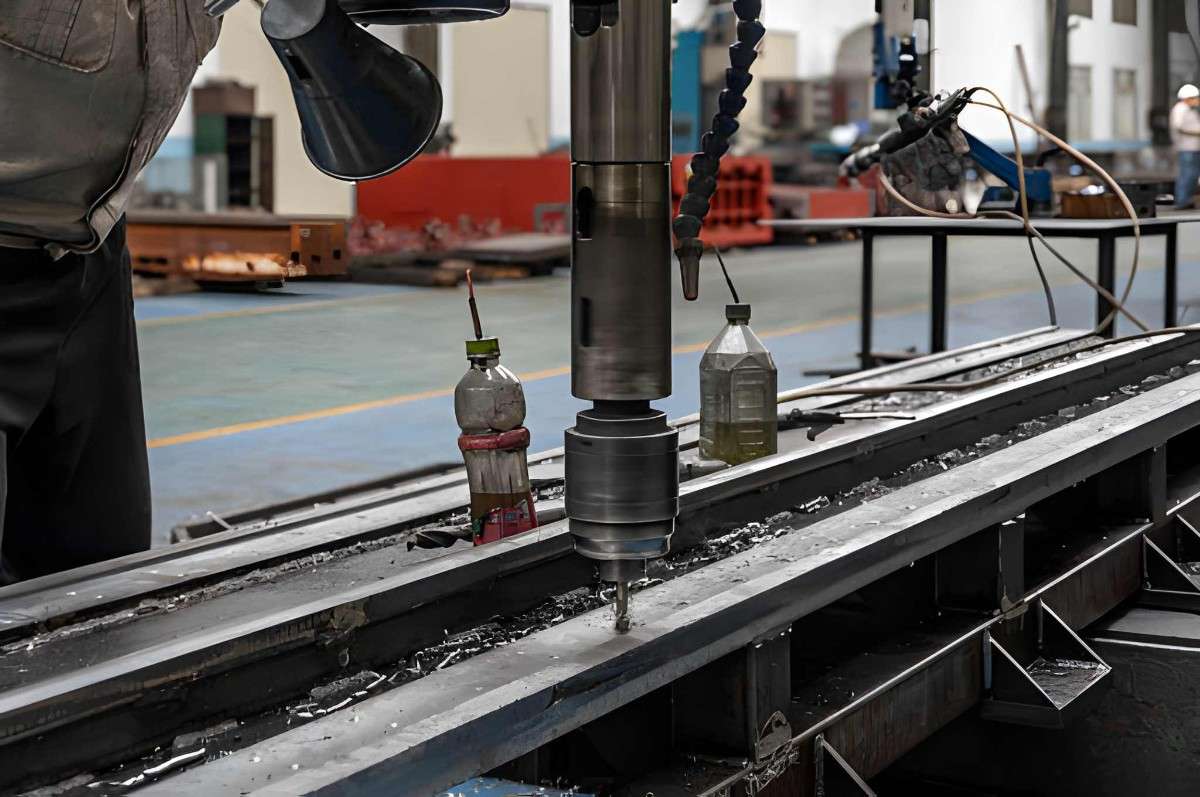 Factory Drilling Worktable
Factory Drilling Worktable
Image Description: A factory drilling machine worktable inside a workshop. The equipment sits on the table for stable machining operations.
A CNC drilling machine consists of different components to offer the best operational stability. Precise and accurate results are not easy to achieve until there’s something unique behind them. These parts are crucial to getting accurate results:
- Control Panel: This panel offers an interface for inputting programming instructions and overseeing the drilling process. This is where the designs turn into commands for creating precise holes.
- Spindle: This is crucial to delivering a precise outcome. It controls the speed and power for maximum precision. The Spindle holds the drill bits and makes them rotate.
- Drill Bits: These are the primary tools for cutting into the material to create a hole. Depending on the requirement, drill bits can be used with different diameters, sizes, and materials.
- Worktable: The space where we place the workpiece for drilling. It moves and adjusts at different axes to offer precise results and create complex holes.
- Motor: The power source for the Spindle, which controls its speed and torque. It affects the ability of drilling machines to work on different materials.
- Tool Changer: High-end component of the latest CNC drilling machines. This part changes the drill bits and tools automatically according to the requirements.
- Chip Conveyor: Removes the residue, such as debris or chips, to maintain the cleanliness and smooth surface. The chip conveyor prevents machine wear and tear.
- Cooling System: Drilling produces a lot of heat, which can damage the workpiece. A cooling system decreases the heat by ensuring the best quality results.
Types of CNC Drilling Machines
CNC drilling machines come in different types, each catering to specific industrial requirements. Thus, understanding them can help you make a wise choice while performing drilling. Let’s explore these:
Upright CNC Drill Press
The most common type of drilling machinery offers versatile solutions to handle a variety of drilling tasks. Thanks to its upright configuration, it can easily accommodate any big product. The powerful motors and various spindle speeds help this machine work on different types of materials. It can work with complex designs and is best for bulk production.
Radial Arm CNC Drill Press
The radial arm CNC drill press is unique because it has a moving spindle. This offers flexibility and more control over the design. Besides, it comes with a radial arm that can adjust to different angles and positions. As a result, we get more versatility and highly complex products. Its major uses are in metal fabrication, woodwork, and the plastic industry.
Gang Drilling Machine
Gang drilling machines can perform different drilling tasks on a workpiece as they have drilling spindles attached to a single panel. This enhances efficiency and precision, which directly boosts production. They operate independently and can also create different hole sizes and structures.
Bench-Top CNC Drill Press
This CNC drilling machine features a unique design offering precision and accuracy. It can work on small—to medium-sized workpieces. It can adjust and work efficiently even in narrow spaces. Although it is small, its ability to handle different materials and high accuracy is paramount.
Multiple Spindle Drilling Machine
The multiple-spindle drilling machine enhances productivity with its consistent features. It allows the creation of various holes at the same time. All the spindles work independently and can create multiple holes of different sizes and shapes in one go. Each Spindle can move according to drilling parameters and allow customized drilling options.
Turret-Type CNC Drilling Machine
These CNC drilling machines are more automatic and independent than the previous ones. They feature a rotating turret and different tools. While drilling, they can change the tools according to requirements, helping save time and enhance efficiency. With high-end programming, turret-type machines can drill, tap, and perform other operations effortlessly.
FAQs
1. What are some limitations of CNC Drilling Machinery?
Although CNC has several advantages, it still has a few drawbacks. The major limitation is the initial investment cost, which is not easy for small startups to bear. Secondly, the operation requires a unique experience, not a game for everyone. Lastly, it needs proper maintenance, which also costs bucks.
2. Is CNC Drilling a Cost-Effective Method?
Although the initial investment is high, CNC drilling is cost-effective in the long run. High-quality tools with better durability and precision help create more products in less time. Besides, it also works on products with highly complex designs. Moreover, it also offers high-volume production and durability of the material.
3. How Long Does CNC Drilling Take?
CNC drilling can take minutes, but depending on the complexity of the workpiece, it can also take hours. It also relies on the product’s material; for example, aluminum takes only seconds per hole. The depth of the hole and the operator’s skill also matter.
4. What’s the Maximum Length of Hole We Can Make in CNC Drilling?
The maximum achievable depth of the hole depends upon the drilling tool, drill bit, and material of the product. However, according to some stats, you can get the hole 10 times the diameter of the drill bit. For example, if the diameter of the drill bit is 6mm, you can expect the hole length to be up to 60mm.
Conclusion
CNC drilling is an efficient drilling method that produces maximum results with accuracy. By incorporating AI and automation, this method will rule the manufacturing industry in the future. The whole process of CNC drilling enhances manufacturing capability. Although it requires a high investment, the results and functionality make it cost-effective.
However, CNC drilling also requires keen attention to detail. Therefore, Premium Parts saves you money and effort by offering different types of CNC drilling solutions to meet your requirements. Whether you need products in bulk with high quality or a few precise items, we have something for you. Contact us today and get assistance from professionals.



